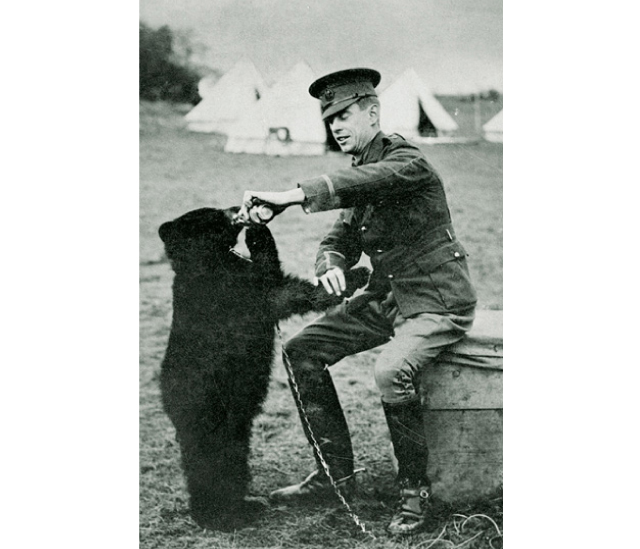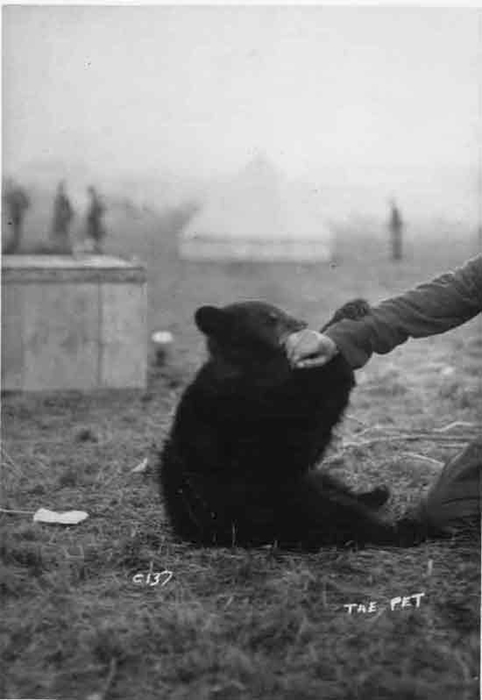Did you know that the original Winnie the Pooh was a mascot for a Canadian Infantry Brigade during the First World War?
When war broke out in August 1914 and Britain declared war on Germany, Canada, as the senior Dominion nation in the British Empire, automatically declared war as well. Having joined the Canadian Expeditionary Force, a solider named Harry Colebourn was travelling across the country to reach his training camp. Colebourn had originally been born in England and emigrated to Canada aged 18. He attended the Ontario Veterinary College where he completed a degree in veterinary surgery before moving to the town of Winnipeg.
As he made his journey across Canada by train, Colebourn encountered a hunter selling a bear cub. He had recently killed the cub’s mother and accepted a $20 fee from Colebourn for the surviving cub. In remembrance of the town that he had left Colebourn named the cub Winnipeg, or Winnie for short.
Colebourn was eventually deployed at Salisbury Plain in Britain where Winnie stayed as a mascot to the local forces. However, when Colebourn was sent to France for three years, he left Winnie to the care of London Zoo.
At the conclusion of Colebourn’s war service in France, he formally donated Winnie to London Zoo permanently before he returned to Canada.
It was here that he was seen by the author A.A. Milne and his son Christopher Robin Milne. Christopher was apparently so taken by the young cub that he immediately renamed his own teddy bear from Edward to Winnie the Pooh.
The adventures of Christopher Robin Milne and his toy Winnie would come to be the topic for A.A. Milne’s world famous stories set in Ashdown Forest in East Sussex.
The original Winnie lived at London Zoo until 1934 when he died at 19 years old. A statue of Winnie and Harry Colebourn stands in London Zoo.










